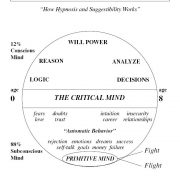Liberation from You

Bob Marley (photo by Euli Frey)
Liberation. The word is inspiring and filled with history and meaning.
Look up the phrase “independence” on Wikipedia and you’ll get a definition about countries, nations and states and self government.
Look up the word liberation, and you won’t get much. As a definition, three words, actually.
Why so much about freedom but so little about liberation?
I think it’s because when we’re in a prison cell, or in a dictatorship where we’re unable to travel freely, we know it. Those things are obvious to see and easily trigger a desire to be free from them.
What is not so obvious is when we are a prisoner to our own mind.
Liberation: What we really want but don’t know it.
People can get comfortable living in a dictatorship. Prisoners can become accustomed to and even comfortable with prison life. “This is how it is. We just have to make the best of it” is how we might come to acceptance of these conditions. But we don’t deny the fact that we aren’t free.
Not so when it comes to our minds. We have the capability to live our whole lives imprisoned by our beliefs, thoughts and feelings, and believe the whole time that we aren’t. This is called delusion.
This is what we all truly desire: liberation from the things that keep us from happiness, health, and prosperity, including the inability to see them for what they are. We seek liberation from unhappiness, unease, discontent, and discomfort. We want liberation from emotions such as sadness, anger, guilt, regret, and fear. We want freedom from bad habits, patterns of thinking that don’t serve us, and lack of self worth and self esteem.
At our core, we all seek liberation from what holds us back from what we want. What is required is liberation from being blind to the fact that the biggest thing that holds us back is ourselves.
The problem is that we can get pretty chummy with those things that imprison us. We can become so comfortable and so accustomed to living in fear, anger and sadness that we come to accept it as how it is. This way of being can become so pervasive that if given the key to our own liberation, we will give it back and say no thanks. Then, we will blame something or someone else for our inability to step through the door.
True liberation, true freedom, is being able to see what is true and act accordingly. The truth will set you free.
The truth is that most of us will never completely escape the emotional landscape that surrounds our humanity. We will be subject to grief and sadness, anger and resentment, guilt and regret, unease and discomfort.
Our liberation comes from seeing this truth with stark clarity and exercising our freedom to choose how to respond. To be liberated from ourselves is to see clearly that we don’t need to be slaves to our emotions, desires, regrets, or habits. We can at least acknowledge that the chains that bind us to an unfulfilled life are illusory, and like wisps of smoke, can be blown away at any time.
But it’s not easy. Most people need some help. The best that most can hope for is to achieve liberation from the heaviest chains, and only you know what they are.
“Emancipate yourself from mental slavery. None but ourselves can free our minds.”
~Bob Marley, Redemption Song
Ted
You can hear the podcast of this blog at TedMoreno.com, or Soundcloud, or iTunes.







 In last week’s post I talked about how hypnosis is a natural state we all go into; while watching TV, while driving, while exercising, before we go to bed and right after we wake up.
In last week’s post I talked about how hypnosis is a natural state we all go into; while watching TV, while driving, while exercising, before we go to bed and right after we wake up.










